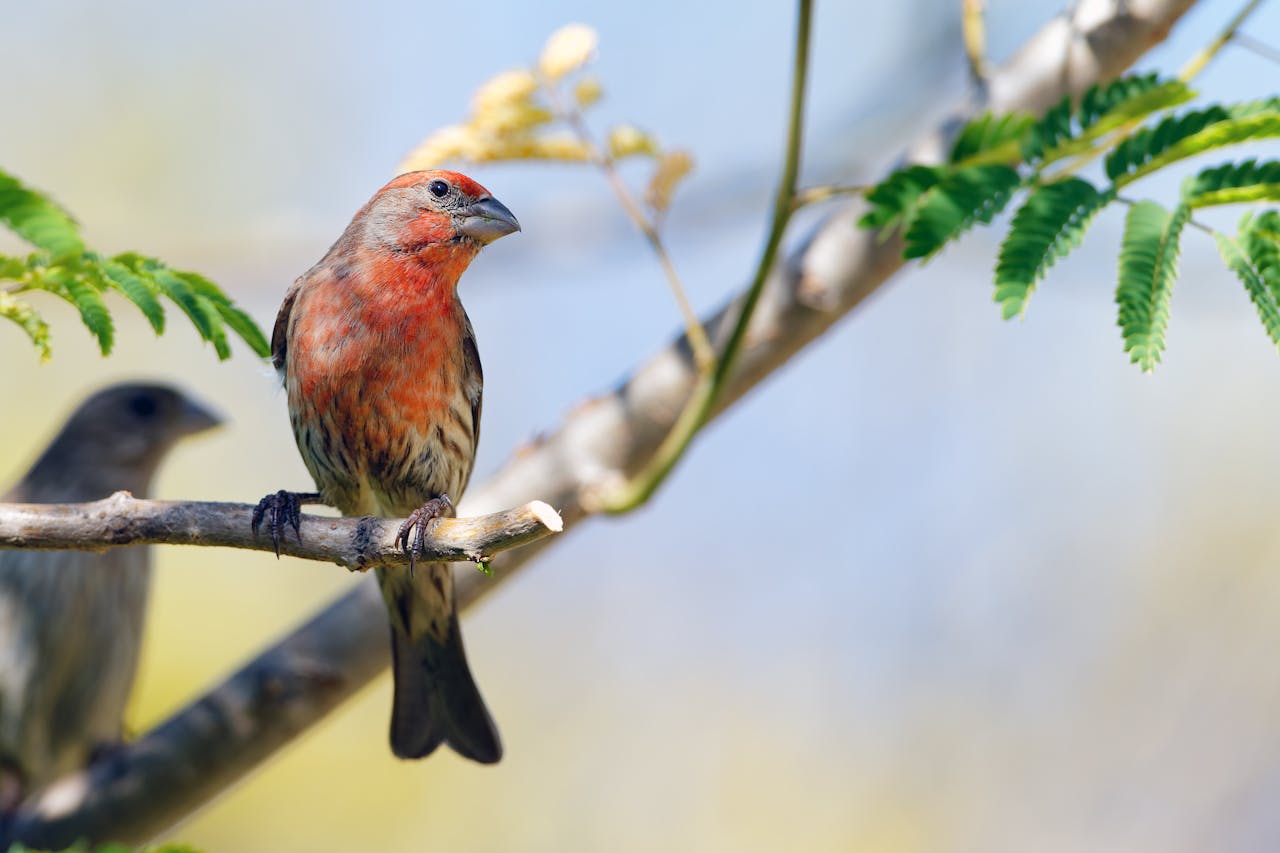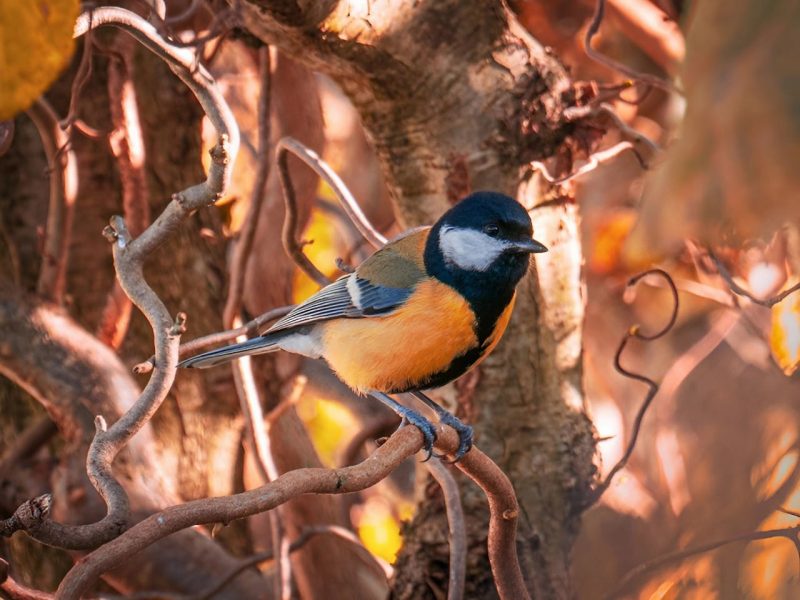Birds are incredible creatures, capable of soaring through the air with grace and agility. One aspect of their lives that often goes unnoticed is the remarkable ability to assess the strength and stability of perches.
From the smallest twig to the mightiest branch, birds must constantly evaluate their surroundings to find a secure resting place. This skill is crucial for their survival, as a misstep could lead to injury or worse.
Avian Vision and Perception
The key to a bird’s perching prowess lies in their exceptional vision and perception. These feathered friends possess visual acuity that puts even the most eagle-eyed humans to shame.
Their eyes are designed to detect the slightest movements and details, allowing them to scrutinize potential perches from a distance.
One technique birds employ is motion parallax. As they move their heads from side to side, the apparent motion of objects at different distances creates a sense of depth perception.
This helps them judge the size and distance of branches, enabling them to determine if they are sturdy enough to support their weight.
Binocular vision is another crucial factor in a bird’s perching abilities. Their eyes are positioned on the sides of their heads, providing an overlapping field of view. This binocular vision, combined with other depth cues, allows birds to accurately perceive the three-dimensional structure of branches and objects, ensuring they choose a stable perch.
Physical Characteristics of Perches
While vision plays a significant role, birds also rely on their keen understanding of the physical characteristics of potential perches. One of the primary factors they consider is branch diameter.
Birds instinctively seek out branches with a diameter proportional to their body size and foot span. Larger birds naturally gravitate towards thicker, sturdier branches that can support their weight, while smaller species can comfortably perch on thinner twigs.
The angle and structure of a branch are equally important. Birds generally prefer branches that are angled upwards or horizontally, as these provide a stable surface for perching. They also evaluate the structural integrity of the branch and its connection to the tree, ensuring it can withstand its weight and movement.
Texture and surface play a role in perch selection as well. Birds favor rough or knobby surfaces that offer better grip and traction for their feet. Smooth surfaces may be avoided due to the risk of slipping, particularly in wet or windy conditions.
Behavioral Observations and Learning
While birds possess innate abilities to assess perches, they also rely on behavioral observations and learning to refine their skills. Young birds, in particular, learn through trial and error.
They test various perches and observe their stability, learning from their mistakes and near-misses. These experiences teach them which perches to avoid and which ones are safe.
Social learning is another valuable tool in a bird’s perching arsenal. By observing and learning from the perching choices of more experienced individuals in their flock or family group, birds can quickly adapt to new environments and avoid potential dangers.
It’s worth noting that some perching preferences and skills may be innate or passed down through generations. For example, a bird may instinctively know to avoid certain types of branches or materials based on inherited knowledge from its ancestors.
Environmental Factors
Birds are highly attuned to their environment and adjust their perching behavior accordingly. Weather conditions play a significant role in their decision-making process. During windy, rainy, or icy conditions, birds may seek out sturdier perches or avoid perching altogether to prevent accidents.
The presence of predators also influences a bird’s perching choices. When a potential threat is nearby, birds prioritize safety over convenience and opt for more secure perches, often in densely foliaged areas or higher branches.
Nesting and roosting periods are particularly critical times for birds when it comes to perch selection. During these vulnerable stages, the safety of eggs and chicks becomes paramount. Birds will meticulously assess potential perches, ensuring they are sturdy, well-protected, and free from potential threats.
Personal Experience and Observations
As an avid birdwatcher, I’ve had the privilege of witnessing these remarkable perching behaviors firsthand. One particular experience that stands out is observing a family of woodpeckers in my backyard.
While the parents expertly navigated the sturdy branches of an old oak tree, the fledglings would occasionally misjudge a perch and tumble to the ground. However, they quickly learned from their mistakes and began favoring the rougher, thicker branches that provided better traction and support.
Another instance that amazed me was watching a flock of sparrows on a windy day. As the branches swayed and twisted, the birds seemed to effortlessly adjust their perching positions, constantly evaluating the stability of their chosen spots. It was a remarkable display of their perching prowess and adaptability.
Final Words
Birds truly are masters of perching, possessing a remarkable combination of visual acuity, physical understanding, behavioral learning, and environmental awareness. From their keen eyesight to their innate knowledge of branch characteristics, these feathered friends have evolved to navigate the world of perches with incredible skill.
Whether it’s a tiny twig or a towering branch, birds meticulously assess each potential perch, considering factors such as diameter, angle, texture, weather conditions, and predator presence. Their ability to learn from experience and observation further refines their perching abilities, ensuring they find the safest and most secure resting places.
As we observe these fascinating creatures in our backyards, parks, or nature preserves, we can’t help but be amazed by their perching prowess. It’s a testament to the incredible adaptations and behaviors that have allowed birds to thrive in their ever-changing environments.



